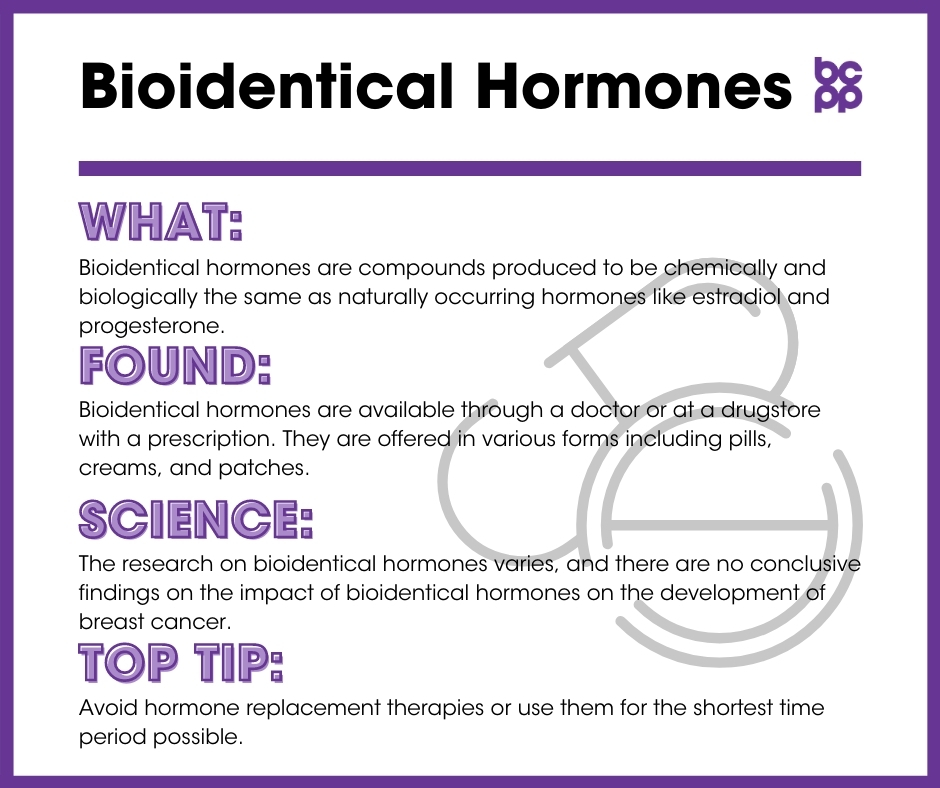Bio identical hrt – Bio identical hormone replacement therapy (BHRT) has emerged as a revolutionary approach to hormone replacement, offering a natural and effective solution to hormonal imbalances. Unlike traditional HRT, BHRT utilizes hormones identical to those produced by the body, ensuring optimal absorption and minimizing side effects.
As we delve into this comprehensive guide, we will explore the various types of BHRT, their potential benefits and risks, and the role of healthcare professionals in providing informed and responsible treatment.
Introduction
Bioidentical hormone replacement therapy (BHRT) is a type of hormone therapy that uses hormones that are identical to those produced by the body. This is in contrast to traditional hormone therapy, which uses synthetic hormones that are not identical to those produced by the body.
The concept behind BHRT is that by using hormones that are identical to those produced by the body, the risks of side effects are reduced. This is because the body is more likely to accept and use hormones that are identical to its own.
Benefits of BHRT
- Reduced risk of side effects
- Improved hormone balance
- Relief from symptoms of hormone imbalance
Types of BHRT: Bio Identical Hrt

Bioidentical hormone replacement therapy (BHRT) can be administered through various routes, each with its own advantages and disadvantages.
The main types of BHRT include:
- Oral
- Transdermal
- Injectable
Oral BHRT
Oral BHRT involves taking hormones in pill or capsule form. This is the most common type of BHRT because it is convenient and relatively inexpensive.
Advantages:
- Convenient and easy to take
- Relatively inexpensive
Disadvantages:
- Can cause gastrointestinal side effects, such as nausea and vomiting
- May not be as effective as other types of BHRT
Transdermal BHRT
Transdermal BHRT involves applying hormones to the skin through a patch, cream, or gel. This allows the hormones to be absorbed directly into the bloodstream, bypassing the digestive system.
Advantages:
- Avoids gastrointestinal side effects
- May be more effective than oral BHRT
Disadvantages:
- Can be more expensive than oral BHRT
- May cause skin irritation
Injectable BHRT
Injectable BHRT involves injecting hormones directly into the muscle or fat tissue. This is the most effective type of BHRT, but it is also the most invasive and expensive.
Advantages:
- Most effective type of BHRT
- Can be customized to individual needs
Disadvantages:
- Most expensive type of BHRT
- Invasive and requires injections
Benefits of BHRT

Bioidentical hormone replacement therapy (BHRT) has been gaining popularity as a potential treatment for various conditions related to hormonal imbalances. Research suggests that BHRT may offer several benefits, including:
Alleviation of Menopausal Symptoms
- BHRT has been found to effectively alleviate menopausal symptoms such as hot flashes, night sweats, mood swings, and vaginal dryness.
- By replenishing the declining levels of estrogen and progesterone during menopause, BHRT helps restore hormonal balance and alleviate these uncomfortable symptoms.
Hormonal Imbalances
- BHRT can also address hormonal imbalances caused by other factors, such as thyroid disorders, adrenal fatigue, or pituitary gland dysfunction.
- By providing bioidentical hormones that mimic the body’s own, BHRT helps restore hormonal harmony and improve overall health and well-being.
Risks and Side Effects
While BHRT offers potential benefits, it’s crucial to be aware of potential risks and side effects associated with its use.
The risks and side effects of BHRT vary depending on the individual and the type of hormone being used. However, some common risks and side effects include:
Blood Clots, Bio identical hrt
- BHRT may increase the risk of blood clots, especially in individuals with a history of clotting disorders or those who are immobile for extended periods.
Heart Disease
- Certain types of BHRT, such as estrogen-only therapy, may increase the risk of heart disease in some women.
Stroke
- Estrogen-only therapy may also increase the risk of stroke in some women.
Cancer
- Long-term use of estrogen-only therapy may increase the risk of certain types of cancer, such as endometrial cancer.
- Combined estrogen and progesterone therapy may increase the risk of breast cancer in some women.
Other Side Effects
- Other side effects of BHRT may include nausea, vomiting, headaches, breast tenderness, and mood changes.
It’s important to note that these risks and side effects are not common in all individuals who use BHRT. However, it’s essential to discuss these potential risks and side effects with a healthcare professional before starting BHRT to determine if it is right for you.
Comparison with Traditional HRT

Bioidentical hormone replacement therapy (BHRT) and traditional hormone replacement therapy (HRT) both aim to alleviate the symptoms of hormone imbalances, particularly in menopausal women. However, there are key differences between the two approaches.
The primary distinction lies in the composition of the hormones used. BHRT utilizes hormones that are chemically identical to those naturally produced by the body, while traditional HRT employs synthetic or modified hormones.
Hormone Composition
| Characteristic | BHRT | Traditional HRT |
|---|---|---|
| Hormone Structure | Identical to natural hormones | Synthetic or modified hormones |
| Estrogen Type | Estradiol, estriol, estrone | Conjugated equine estrogens (CEE), ethinyl estradiol |
| Progesterone Type | Bioidentical progesterone | Synthetic progestins (e.g., medroxyprogesterone acetate) |
Potential Benefits
- Improved symptom relief: Both BHRT and traditional HRT can effectively alleviate menopausal symptoms such as hot flashes, night sweats, and mood changes.
- Reduced risk of osteoporosis: Both therapies can help maintain bone density and reduce the risk of osteoporosis.
- Improved cognitive function: BHRT may provide additional benefits for cognitive function, such as improved memory and concentration.
Risks and Side Effects
- Blood clots: Traditional HRT has been associated with an increased risk of blood clots, while BHRT appears to carry a lower risk.
- Breast cancer: Traditional HRT has been linked to an increased risk of breast cancer, particularly in women who use estrogen-only therapy. BHRT may carry a lower risk, but more research is needed.
- Uterine cancer: Traditional HRT with estrogen and progestin can increase the risk of uterine cancer. BHRT with bioidentical progesterone may have a lower risk.
Patient Selection and Monitoring
Patient selection is crucial in BHRT. It is essential to identify individuals who may benefit from this treatment while minimizing risks. Regular monitoring during BHRT is equally important to ensure optimal outcomes and timely adjustments.
BHRT may be suitable for women experiencing symptoms of hormone imbalance, such as hot flashes, night sweats, vaginal dryness, and mood changes. Men with low testosterone levels may also benefit from BHRT.
Criteria for Patient Selection
- Symptomatic hormone imbalance despite lifestyle modifications
- Normal thyroid function
- Absence of contraindications (e.g., active cancer, severe liver disease)
- Realistic expectations and informed consent
Importance of Monitoring
Regular monitoring during BHRT is essential to:
- Assess symptom improvement and adjust dosage accordingly
- Monitor hormone levels to ensure optimal balance
- Detect and manage potential side effects
- Screen for potential health concerns (e.g., endometrial thickening)
Monitoring typically involves regular blood tests, physical exams, and symptom assessments. The frequency and type of monitoring may vary depending on individual needs and the specific hormones being used.
Role of Healthcare Professionals
Healthcare professionals play a crucial role in providing bioidentical hormone replacement therapy (BHRT). They are responsible for assessing patients’ suitability for BHRT, prescribing and monitoring treatment, and providing comprehensive patient education.
Informed consent is essential before initiating BHRT. Healthcare professionals must thoroughly inform patients about the benefits, risks, and potential side effects of BHRT. They should also discuss alternative treatment options and ensure that patients understand the potential impact of BHRT on their overall health and well-being.
Patient Education
Patient education is paramount in BHRT. Healthcare professionals should provide patients with clear and comprehensive information about:
- The symptoms and causes of hormonal imbalances
- The different types of BHRT available
- The potential benefits and risks of BHRT
- How to use BHRT properly
- The importance of regular follow-up appointments
Ethical Considerations
The use of BHRT raises ethical concerns that warrant careful consideration. These concerns include:
The potential for misuse and abuse of BHRT exists, as it can be prescribed for both legitimate medical conditions and for non-medical purposes. This can lead to potential harm to patients who may not need the treatment or who may experience adverse side effects.
Therefore, responsible prescribing practices are crucial to ensure that BHRT is used appropriately and ethically.
Potential for Misuse and Abuse
- BHRT may be prescribed for conditions for which there is limited scientific evidence, or for non-medical purposes such as anti-aging or performance enhancement.
- The use of BHRT without proper medical supervision can lead to adverse effects, including hormonal imbalances, cardiovascular risks, and potential interactions with other medications.
- The potential for misuse and abuse of BHRT highlights the importance of responsible prescribing practices, informed patient consent, and ongoing monitoring to ensure appropriate use and minimize potential risks.
Essential FAQs
What are the potential benefits of BHRT?
Research suggests that BHRT may alleviate menopausal symptoms such as hot flashes, night sweats, and mood swings. It can also improve sleep quality, energy levels, and cognitive function.
What are the potential risks and side effects of BHRT?
As with any medication, BHRT carries potential risks and side effects. These may include breast tenderness, headaches, and nausea. However, these side effects are typically mild and subside over time.
Who is a good candidate for BHRT?
BHRT is suitable for individuals experiencing hormonal imbalances, particularly those related to menopause or other underlying medical conditions. It is essential to consult with a healthcare professional to determine if BHRT is right for you.